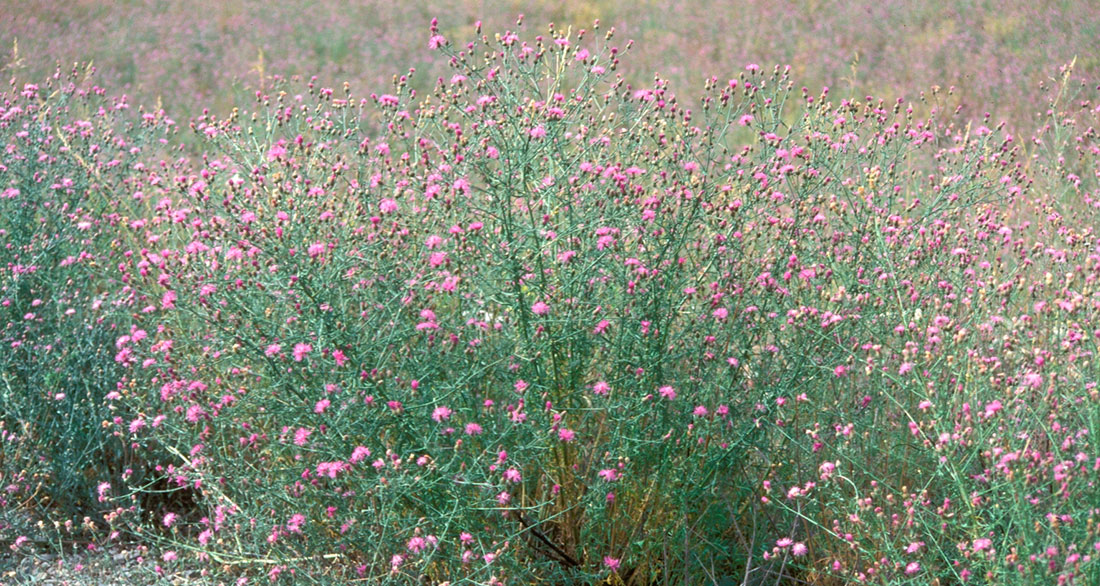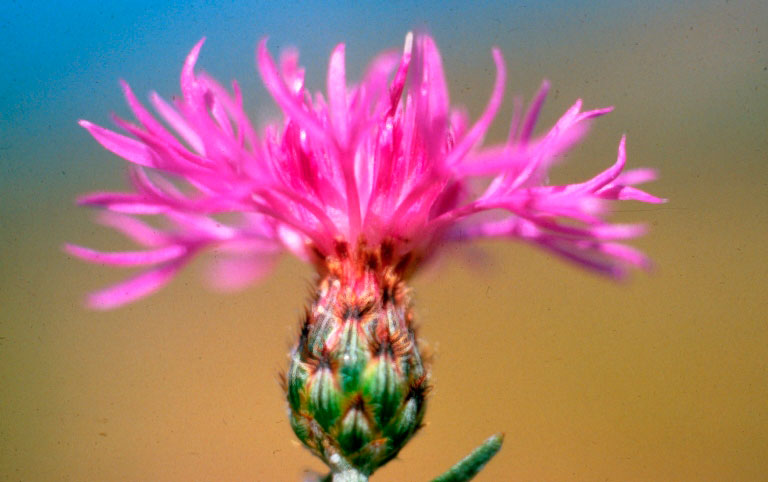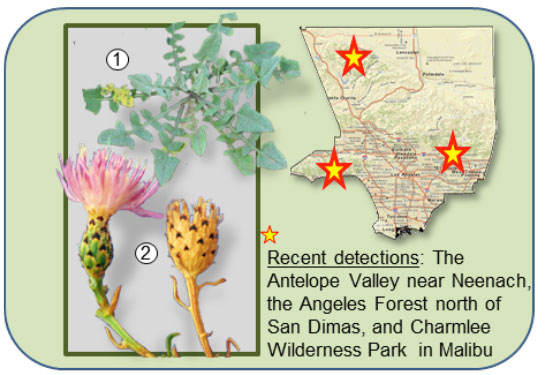Spotted Knapweed
Spotted knapweed (Centaurea maculosa) was introduced into the United States from Eurasia as a contaminant of alfalfa and clover seeds. Knapweeds are prolific competitors for soil moisture and nutrients to the detriment of desirable vegetation and biodiversity.
There is some evidence to suggest that spotted knapweed is allelopatic which means it releases chemical substances which inhibit the growth of surrounding vegetation. This adaptation serves to further increase its competitiveness. Spotted knapweed is unpalatable to wildlife and most livestock. In areas where it has become invasive, spotted knapweed degrades wildlife habitat and biodiversity.
The most serious infestation of spotted knapweed in Los Angeles County was detected on a helicopter pad in the San Dimas Experimental Forest where it was thought to have been brought in on firefighting equipment originating from an infested state like Montana. Although reduced to only a remnant population in the forest, there have not been any comprehensive surveys of the Angeles National Forest so hikers and other visitors are asked to keep their eyes peeled!
Feature photo credit: Steve Dewey, Utah State University




